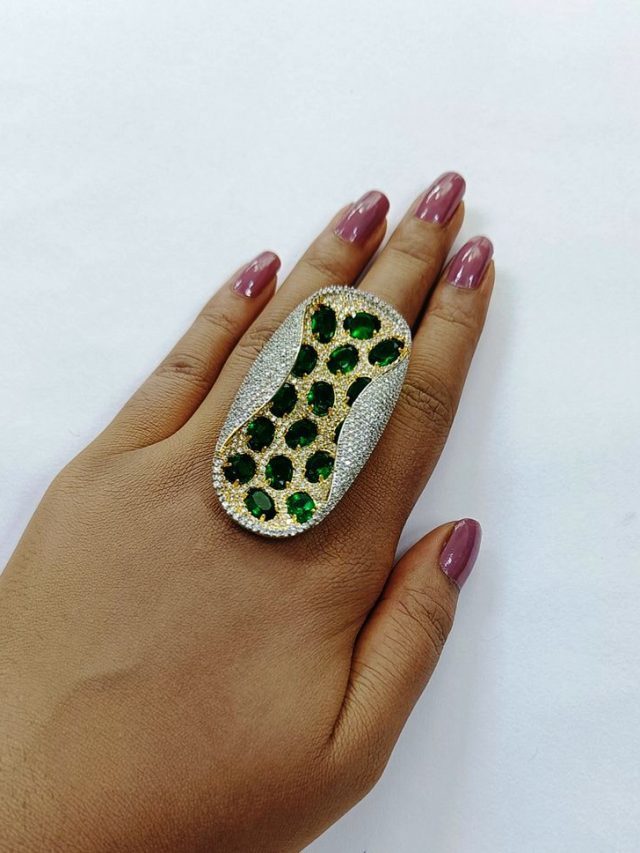
You made it through the holiday trading period and might be sighing from relief. But it’s not enough to hope for the best – start planning stock levels now for a successful 2022, writes JOSH STRUTT.

These poetic words to the Hunters and Collector’s famed rock song ‘Holy Grail’ could well apply to one of the most critical inputs to retail success: sales, margins and closing stock levels.
Time and time again we see that stock levels are the ‘poor’ cousins of the three, yet they command the single largest investment a retailer makes.
How can your business replicate the world’s best retailers, accurately managing your stock levels – thereby avoiding unplanned markdowns along with maximising cash flow and profits – while other retailers just buy what they think will sell, then cross their fingers and hope for the best?
How many retailers really understand the significant impact that a well-managed stock position will have on increased sales, liquidity, and profitability?
In search of the retail Holy Grail
Let’s explore successful end-of-season performers from the ‘also-rans’.
While the Christmas and New Year sales are over, you can now review your results based on a number of key contributing factors including economic confidence, weather, competitive environment and the day of the week on which Christmas fell. Recording and analysing factors influencing these key events in your retail diary for the New Year is an important step to plan for the end of year (EOF) 2022.
Opportunities to maximise stock profitability depends on good management. Such management is made a lot easier by good systems – both computerised and manual – and the discipline of measuring sales, margin and stock position.
Working your systems for profit
Have a product budget: Formal product management often works within a concept known as Open to Buy (OTB). Plans for the performance of product groups are noted in terms of dollars and unit sales, with corresponding levels of purchases, discounts and delivery periods etc.
If sales are trending up, you need to buy more. Discounts can be used to increase units sold to reduce your closing stock target where applicable. A good OTB system will balance all these factors even though that position may still be months away.
Whether you run a formal OTB via a management system, computer spreadsheets or even manually, the key is to ensure you are working towards your planned closing stock positions.
If you finish Christmas overstocked then this trading period will damage your cash flows and lead to unplanned discounts. Conversely, too little stock means you have probably missed out on sales.
Finding the right stock levels to sales
A product budget is an invaluable tool to manage EOF closing stock positions. It can help map predictions for customer purchases, sales, discounts and delivery times and ensure these positions are achieved.
Take some time to consider your ‘right’ stock levels.
Average margin: Retailers should try to differentiate between the concepts of first margin and average margin. The first margin is the difference between the initial sale price and the cost of the item (that is the ‘buyer’s margin’).
The average margin will reflect the various prices at which stock items are sold during an overall time frame and take into account discounts and/or changes in cost during that period.
It is the average margin which is reflected in the profit and loss, however many bestpractice retailers ‘engineer’ better average margins by managing first margins and discounts across the whole trading period.
Whilst a discount may reduce average percentage margin for part of your range, the increase in sales may increase dollar margin.
Good retailing balances these positions without compromising the required dollar margin. By managing your discounts, you will avoid average margins being below plan.
For example: Offers such as ‘buy two, get one free’, may damage margins on one item but serve to increase your sales and your average dollar margin per sale.
The best retailers will always focus on sell-through, margins and closing stock positions and retailers who focus on sales only may well be selling themselves short.
Consider the following formal measures used by some of the world’s best retailers:
• Sell through: This is one of the most important statistics for products that have a finite life. The measure is defined as sales (during a period of time) divided by stock available to sell. For example, if you had 80-items and sold 20 the ‘sell through’ is 25 per cent
• Week’s Cover: This statistic is similar to the above in that it measures sales and stock, except that week’s cover is the reciprocal of the sell through. From our previous example, with stock at 80 and one week’s sales of 20, ‘week’s cover’ is 4.
• Stock turns: This statistic measures investment in stock as well as sales, but is more appropriate to core items that are in stock for longer and/or re-ordered frequently. For example, if the 20 sold above occurred over one month, the extrapolation of sales for a year is 240. Once again, the average investment in stock is 80 per month. Therefore the ‘stock turn’ is three and indicates how many times the stock will turn in a 12-month period. Stock turns provide a handy ready reckoner as to the relative fitness of a retailer’s stock and is definitely one of my favourite measures.
• Best/worst sellers: Without a stock position, a best or worst selling item can hide dangerous underlying stock positions. For example, selling 100 items may sound good, but if the stock was 1,000 items, the rate of sale may not be enough to clear this stock.
These statistics must be used with care and common sense along with a merchandise management mindset. In isolation each statistic is potentially irrelevant.
For example, if a product is ‘turning’ eight times per year at store X and only three times a year at store Y – you could consider sending stock from store Y to store X – to balance supply and demand.
If your ‘sell through’ on product group A is 25 per cent in week 1 of December and only 15 per cent on product group B – you may have a potential problem in either product.
If your ‘week’s cover’ of earrings was 10 in the first week of December 2021 and looks like being three in December 2022, you may be running short on stock (assuming you closed 2021 cleanly).
Overall, avoid looking for the ‘silver bullet’ answer.
‘Retail is detail’ and the detail you are looking for is based on understanding the velocity of sales and margins, relative to the amount of stock held.
Great retailers are already planning for the EOY22. The correct balance will be assessed by comparing performance relative to an objective benchmark point.
That benchmark point may be similar to last year, but if you rank your performance across logical subsets of your business, the worst and best sellers need the most attention.
By using merchandise management skills and some imagination, you can manage offers to head toward a desirable closing stock position.
There is no point discounting items that are selling well, but equally it’s better to clear poor performers in December than in January.
Is there a way to avoid a discount?
Can you move the item to another store? Is there a conditional offer that will benefit broader sales whilst solving your problem? Will your supplier assist? If you do need to discount your item, can you gain a strategic advantage by making this a loss leader?
It is better to consider these questions sooner rather than later. If you monitor performance throughout the year diligently, you may be able to avoid the effects of subsequent vicious discounting.
To compete you need a plan to defeat
Use stock statistics to gain additional sales, but still achieve your required margins, and ensure your finishing stock level is logical, both in terms of cash flow and in terms of the stock you want to start next year with.
There is little point hanging on to dead stock ‘just in case’.
Your Christmas/summer sale period is your best opportunity to clean your stock rooms. Use it to your advantage, but use it logically and plan your management now for 2022.
Failure to plan is a sure-fire plan to failure
The best retail plans are based on understanding historical and current statistics and forecasting the future.
If your current systems cannot help, change systems. If you don’t have a system then there is no better time than the present to establish one that will set your business on the road to your Holy Grail of retail success.






















